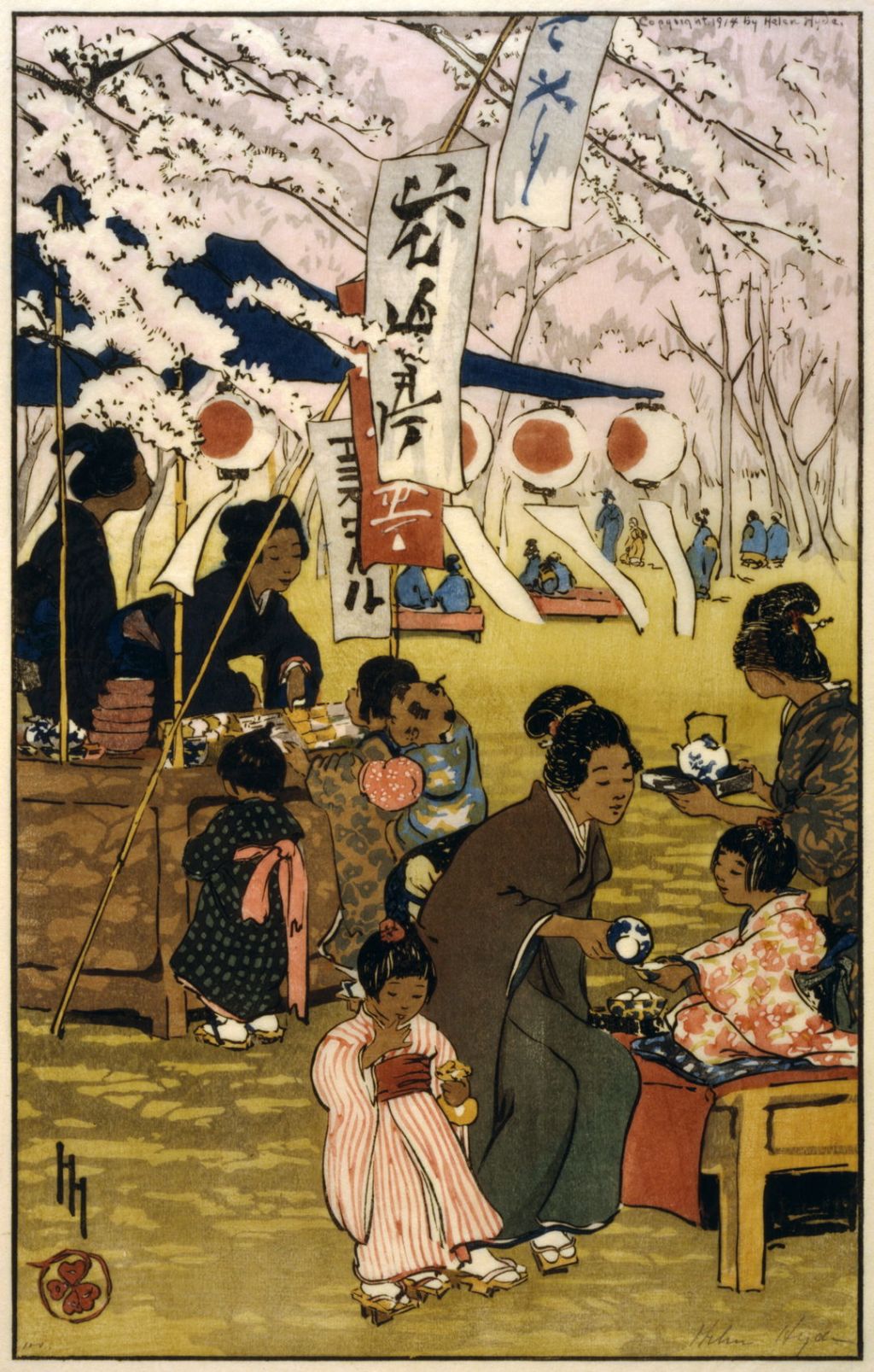I only occasionally feature prints here, largely because I have never made any myself and don’t have the same practical feel for them as I do for painting. But here I’d like to remember a pioneering print-maker, the American Helen Hyde (1868-1919), who died a century ago today on 13 May 1919.
She was born in Lima, a small town in New York State, but spent much of her youth in California, where she studied art at the California School of Design. After a short period in New York City, she went to study in Europe, in both Berlin and Paris; in the latter city, she studied under Raphaël Collin and met Félix Régamey, who were noted Japonistes. She also saw and was influenced by the paintings and prints of the American Impressionist Mary Cassatt, who had herself been studying under Edgar Degas.
When Hyde returned to California after nearly six years in Europe, in 1894, she frequented San Fancisco’s Chinatown where she sketched mainly women and children. The following year she bought herself a printing press, and started to experiment with etching.
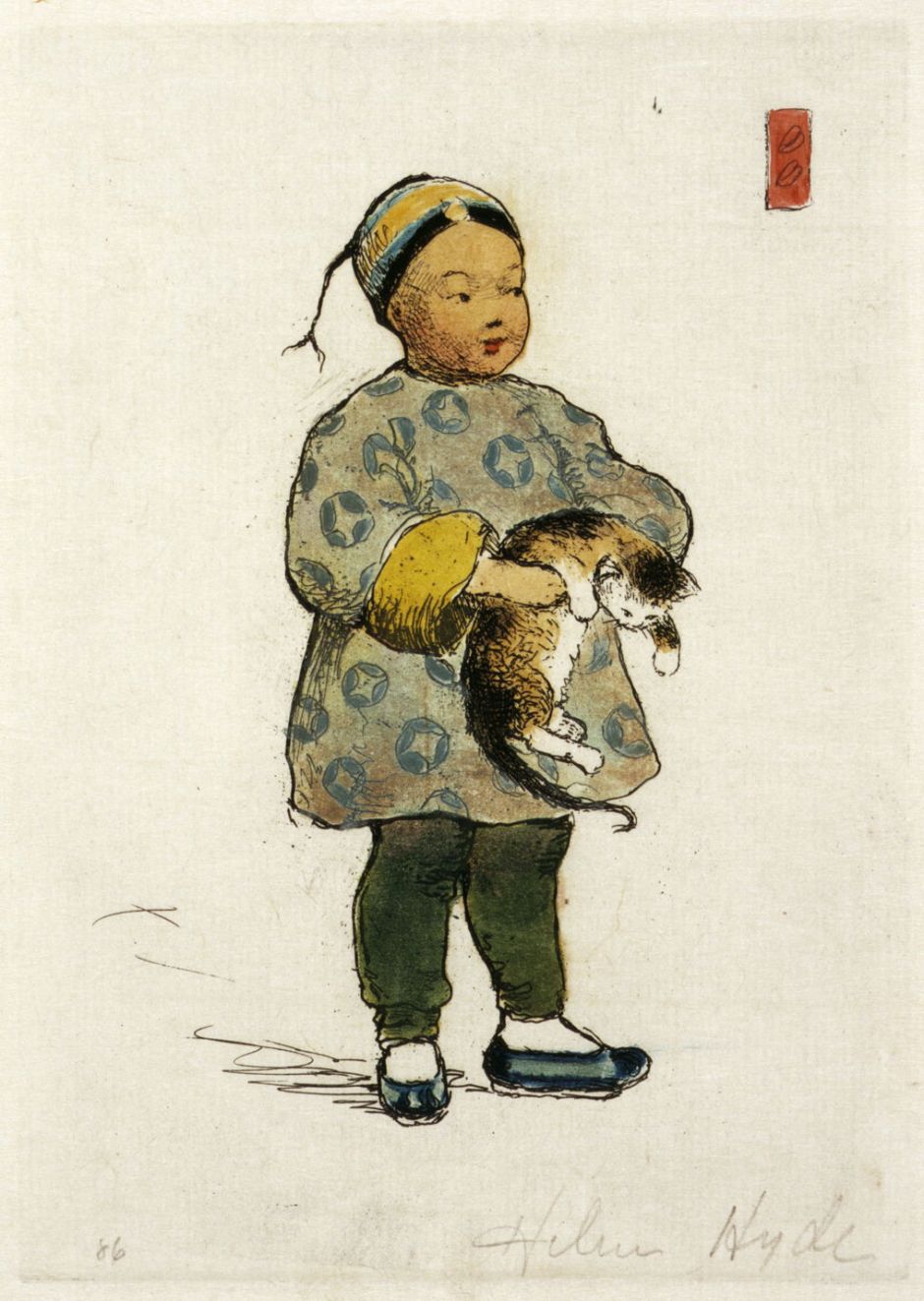
In 1897, Hyde made this delightful colour etching of The Cat and the Cherub, most probably from the sketches that she had been making in Chinatown.
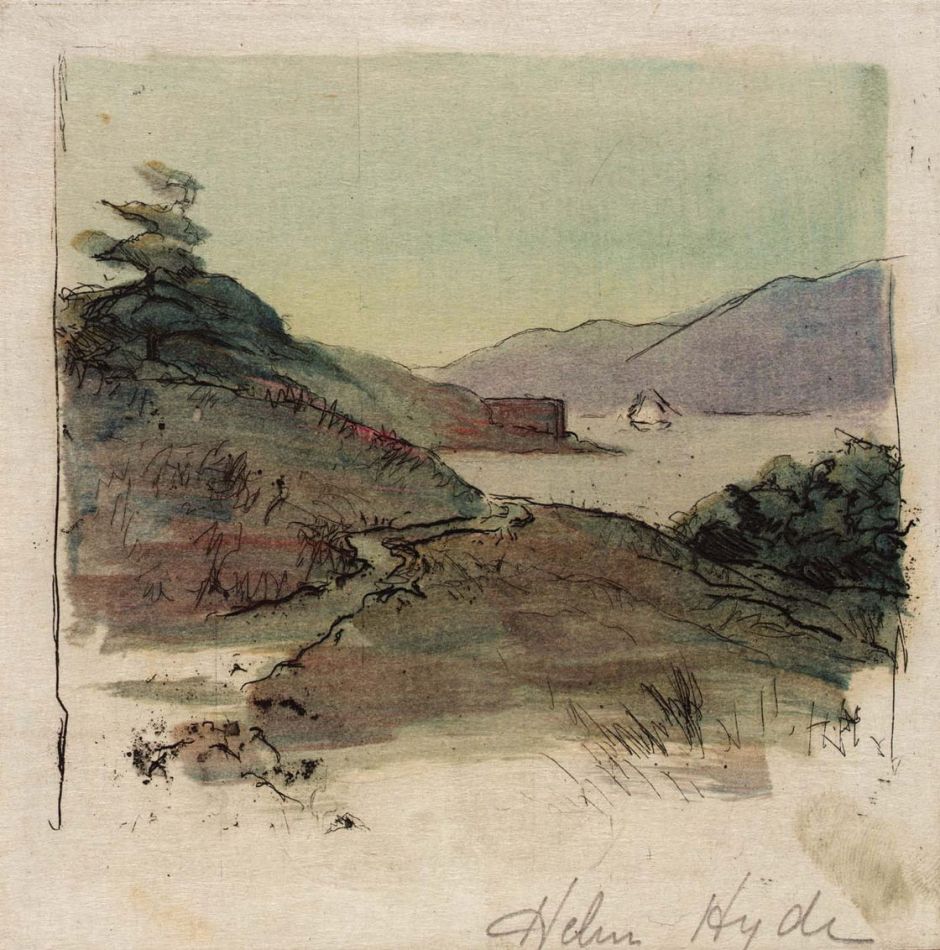
She also made prints of local views, including this of Fort Point in 1898. I presume that this is the fort in San Francisco, in which case it is completely unrecognisable today as it forms the southern end of the Golden Gate bridge, built 1933-37.
She made friends with an unrelated namesake, Josephine Hyde, and in 1899 the two travelled to Japan to learn from Japanese print and painting techniques. Helen Hyde was soon working with woodblock prints, which she learned from the Austrian Emil Orlik who was living in Tokyo at the time.

Interior Decoration from 1900 shows how quickly she learned the technique, and her fascination for Japanese art in everyday settings.

Until 1912, Helen Hyde lived mainly in Japan, but travelled from there to visit China, India, and Mexico, where she sketched for additional series of prints. I show here three examples of those she made from her visit to Mexico in about 1912.

This unusual nocturne, a colour woodcut, showing Moonlight on the Viga Canal (1912) is based on her sketches of this canal, which runs from Mexico City to the suburb of Santa Anita. Although obviously Mexican, her Japonisme has even extended here.
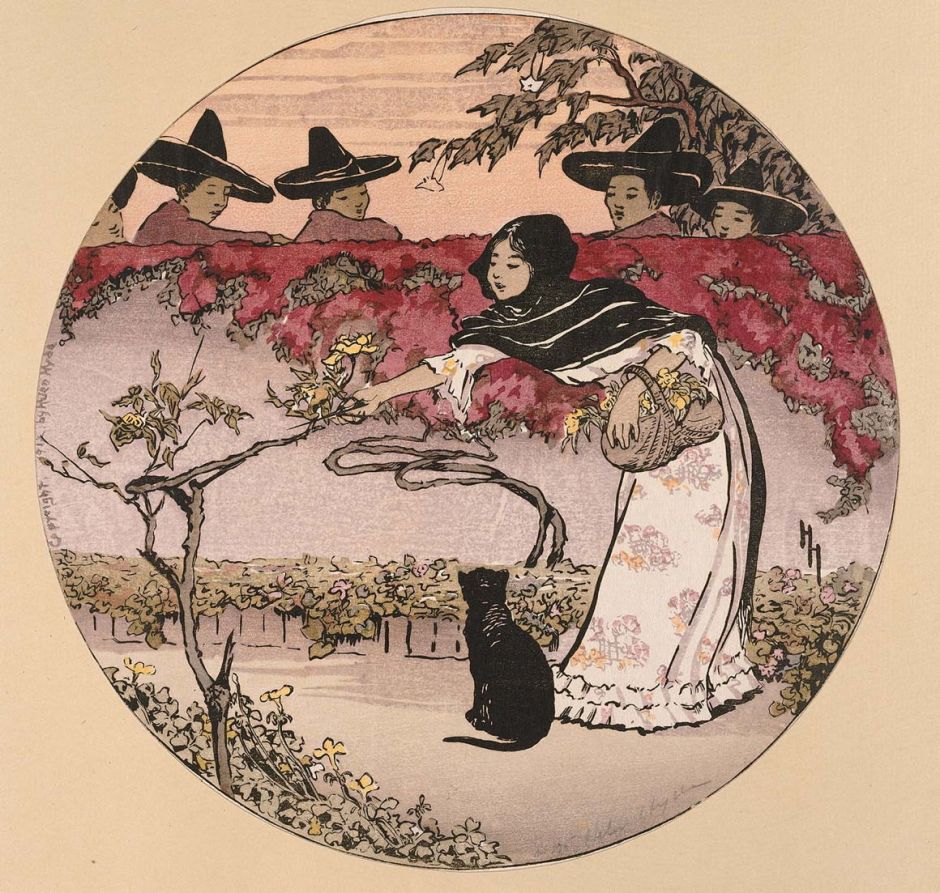
Despite the sombreros and mantilla in A Mexican Coquette from the same year, the plants in this garden are very south-east Asian in appearance.

Oaxaca Market, also from 1912, is one of the most Mexican of her prints from this visit, and appears to have been made from a plein air sketch made on the first of February that year.
Hyde’s views of Japan are numerous and wide-ranging. Like Mary Cassatt, she specialised in depicting women and children, often caught in humorous or intimate moments. She loved pre-industrial Japan, where the kimono was everyday wear, and she saw so much beauty in the landscape and its people.

New Year´s Day in Tokyo, from 1912, is much grander in conception, and a carefully composed print of key elements in the Japanese New Year celebrations. The patterns on each of the different kimonos are marvellous.

I showed yesterday this print of hers of a young Japanese girl arguing with her geese in Complaints from 1914.

Blossom Time in Tokyo, from 1914, is another complex and quite spectacular colour woodcut print showing the tea ceremony taking place during the viewing of blossom in Spring.

Many of Hyde’s simpler motifs show individual figures battling with hostile weather, as in The Blue Umbrella from 1914, which shows a girl sheltering from heavy rain and wind during the winter.
Japan had been changing since its defeat of Russia in 1905, and Hyde was falling out of love with its new, Westernising industrial society. In 1914, after highly productive years during which she had signed around sixteen thousand of her prints, Hyde returned to the USA, where she continued to make prints. She won a bronze medal at the Panama-Pacific International Exhibition in 1915, then moved to Chicago where she had her first solo show, at the Chicago Art Institute in 1916.
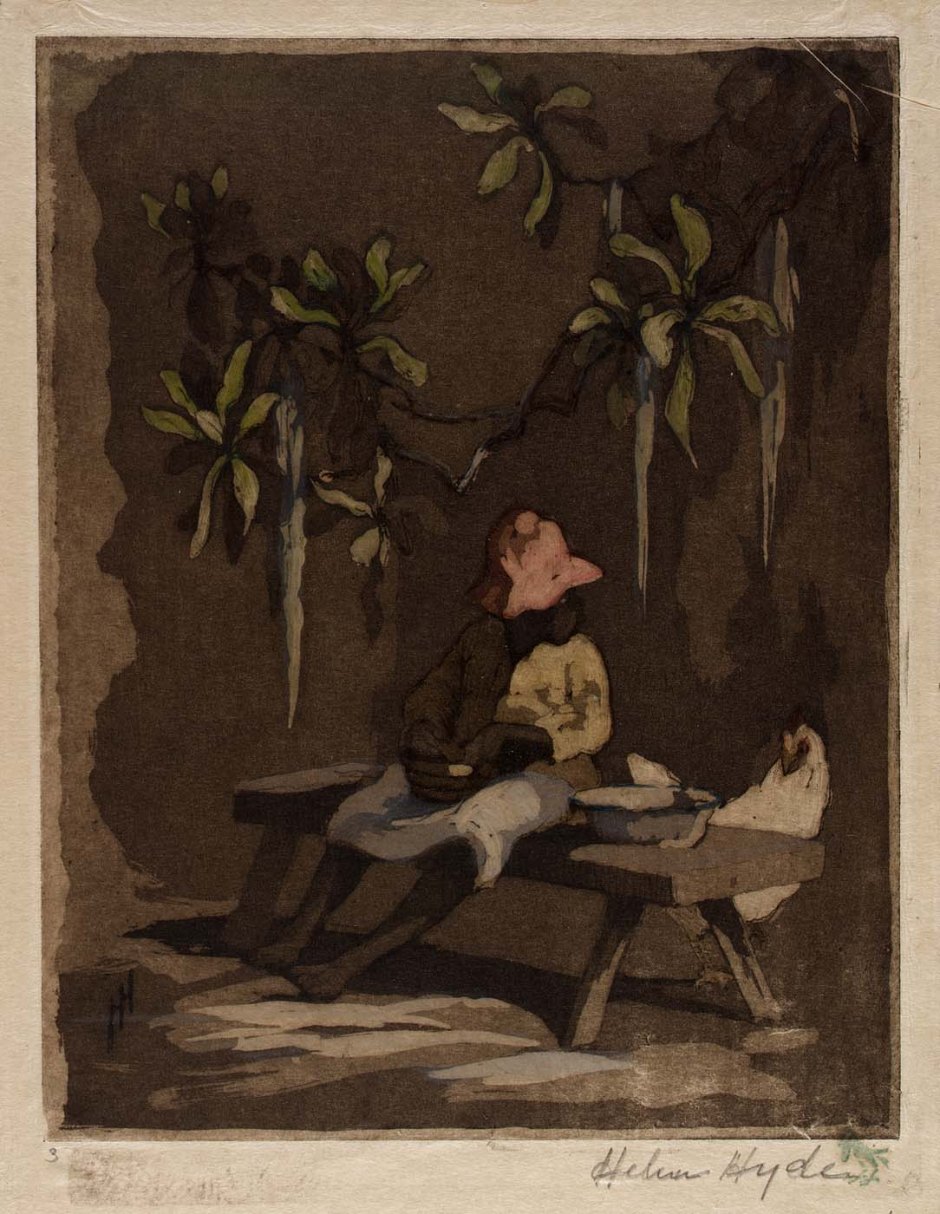
Among her late works is this etching and aquatint of Little Miss Muffet, a strange account of this well-known nursery rhyme. There’s no sign of any spider, but there’s a rather large white chicken where I would have expected the spider to have been.
Helen Hyde had first been diagnosed with cancer in 1914, and in 1919 went to visit her sister in Pasadena, California, where she died on 13 May, at the age of only 51. Although not in the best of health, Mary Cassatt died in 1926.
Her prints continue to be sought-after, and were influential throughout the early twentieth century and beyond.

